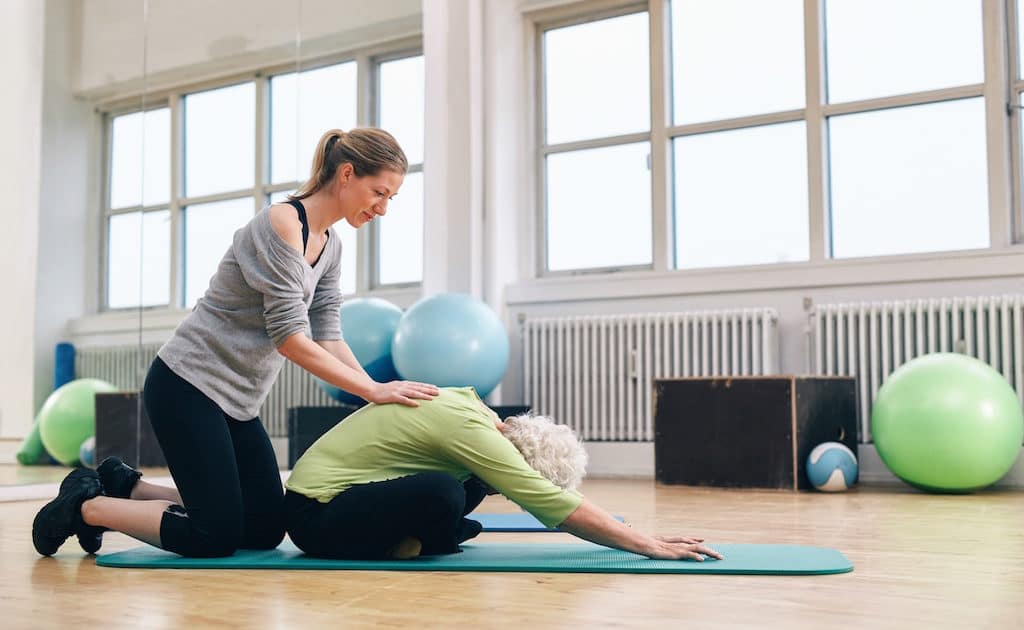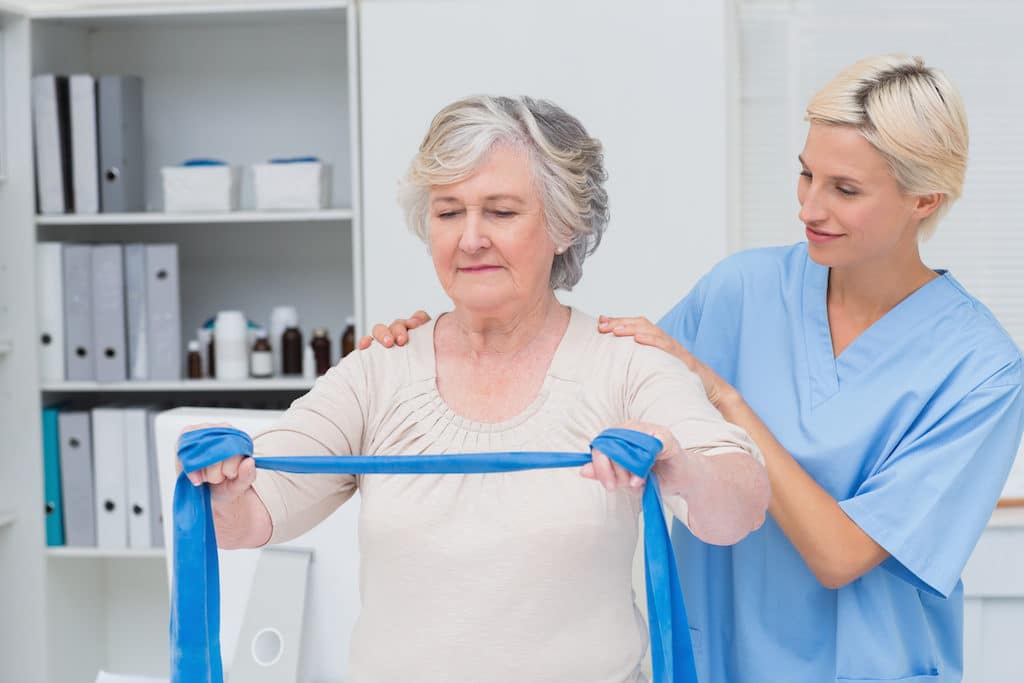Important Facts About Stage 4 of Stroke Recovery


In the 1970s, a Swedish occupational and physical therapist named Signe Brunnstrom developed a seven-stage approach to stroke recovery. The focus of the Brunnstrom Approach is the restoration of motor control following a stroke. Therapists and doctors use this approach to evaluate the progress of stroke recovery and guide their interventions. Engineers and technologists also use this process to help them build tools that will effectively support stroke recovery.
What Happens During Stage 4 of Stroke Recovery?
When a stroke patient reaches stage 4, they have already regained some motor control. Throughout this stage, voluntary movement will go from difficult to easy. Although there is still some involuntary movement and spasticity (tightness of the muscles), they have greatly diminished since the beginning of the recovery. Both will continue to decline as patients move through this stage and into the next one.
Patients will regain control mostly in the extremities, and they will have a limited ability to move normally. The movements may still be out of sync with muscle synergies, but this will improve quickly over the length of this stage.
The focus during this stage is to strengthen and improve muscle control.
Muscle Control
This process of movement is controlled by the brain, which uses feedback from the senses to plan, adjust, and complete the movement.
First, the brain needs visual information to locate the target (a mug, for example). Then, the frontal lobe calculates the reach needed and sends a command to the muscles. The nerves of the spinal cord transmit the information to the hand, and smaller motor neurons distribute the message to the correct muscles. When the hand touches the mug, the sensory receptors send a message back to the brain saying "we've made contact." This information goes up through the spinal cord, and parts of the brain called the basal ganglia and the cerebellum make adjustments and finally confirm to the brain that the mug is securely in the hand.
During the second it takes to reach for a mug and grasp it, the brain does the following:
- It plans a strategy for grasping the mug by calculating the order of movements, their direction, strength, and timing. It needs to predict the movements relative to one another, the duration of each movement, and whether they are phasic (transient movements) or static (stabilizing joints).
- It initiates the movement.
- With feedback from the environment, the brain makes adjustments in the posture and limb positions required to complete the task.
- Once the task is completed, the brain stops the movement.
Muscle control is essential for performing even the most ordinary tasks. Without the ability to initiate, adjust, or stop a movement, we couldn't walk or feed ourselves.
What Are the Best Exercises to Improve Muscle Control?
Now that you are regaining motor control and can start to make normal, controlled movements on a limited basis, you can start to build strength back in your limbs and continue work on your range of motion. Continuing to stretch out your muscles is still important in this stage.
All exercises should be performed in moderation. Fatigue will only increase your weakness and rob you of energy needed for your daily routines and the activities you enjoy.
Active-Assisted Range of Motion Exercises (AAROM)

Therapists use active-assisted range of motion (AAROM) exercises when a stroke patient has some ability to move but still needs help to practice the exercises or complete the movement. A therapist may help guide the movement with their own body (hold the limb, for example) or use bands and other exercise equipment to support the patient. Gravity-assisted devices such as the SaeboMAS, are beneficial in helping the patient perform the movements.
Active Range-of-Motion Exercises (AROM)

You can begin active range-of-motion (AROM) exercises once you have regained some muscle control and can perform some exercises without assistance. They often involve moving a limb along its full range of motion, like bending an elbow or rotating a wrist. AROM exercises increase flexibility, muscle strength, and endurance. Range-of-motion exercises should be practiced equally on both the affected and unaffected sides of the body.
AROM and other active exercises help rebuild the neural pathways that control movement. The more you do them, the stronger and better you will get.
Stroke Recovery Gloves

Stroke recovery gloves work a little bit like splints and can help improve muscle control as practice-active exercises. Rehabilitative supports like the SaeboFlex and the SaeboGlove imitate the natural movement of limbs, thus making it possible to grasp and release objects, even if you have spasticity.
Devices like stroke recovery gloves help build your muscle synergy and increase your muscle control, which will contribute to your ability to perform daily tasks with more and more control and accuracy.
Stretching Exercises

Regular stretching of muscles is essential to regain muscle control and range of motion. A stroke can cause muscle tightening and shortening and joint contractures. Stretching helps with all of these issues. Sometimes, stretching requires a splint or other rehabilitative tool for extra support.
Light Resistive Exercises

Once you have regained some muscle control, it will be important to strengthen your muscles with light resistive exercises. Weight exercises will also help to prevent bone loss. A decrease in bone density happens when muscles are not used or are underused; it can cause brittle bones, which puts you at a higher risk of bone fracture. You should do these weight-bearing exercises for both your arms and your legs.
Strengthening and Resistance Training

These exercises are similar to resistive exercises, but resistance training can also be done with bands, tubing, exercise machines, and putty, for example. The basic principle is to move the muscles against a resistance so that they get stronger over time. The exercises should only be done once you've regained enough control over your muscles to manage normal movement for a short period of time.
Get Professional Support
Of course, when it comes to building a stage 4 stroke recovery exercise program, you should always consult a professional physical or rehabilitation therapist. They can help you with exercise specifics, finding the right tools and equipment, and, of course, to provide assistance, especially in the beginning.
Remember: the goal of stage 4 is to regain enough muscle control to perform daily tasks normally at least some of the time. The following stages will help you regain more muscle control, range of motion, and endurance so that these daily tasks become easier and easier.
All content provided on this blog is for informational purposes only and is not intended to be a substitute for professional medical advice, diagnosis, or treatment. Always seek the advice of your physician or other qualified health provider with any questions you may have regarding a medical condition. If you think you may have a medical emergency, call your doctor or 911 immediately. Reliance on any information provided by the Saebo website is solely at your own risk.
All content provided on this blog is for informational purposes only and is not intended to be a substitute for professional medical advice, diagnosis, or treatment. Always seek the advice of your physician or other qualified health providers with any questions you may have regarding a medical condition. If you think you may have a medical emergency, call your doctor or 911 immediately. Reliance on any information provided by the Saebo website is solely at your own risk.



